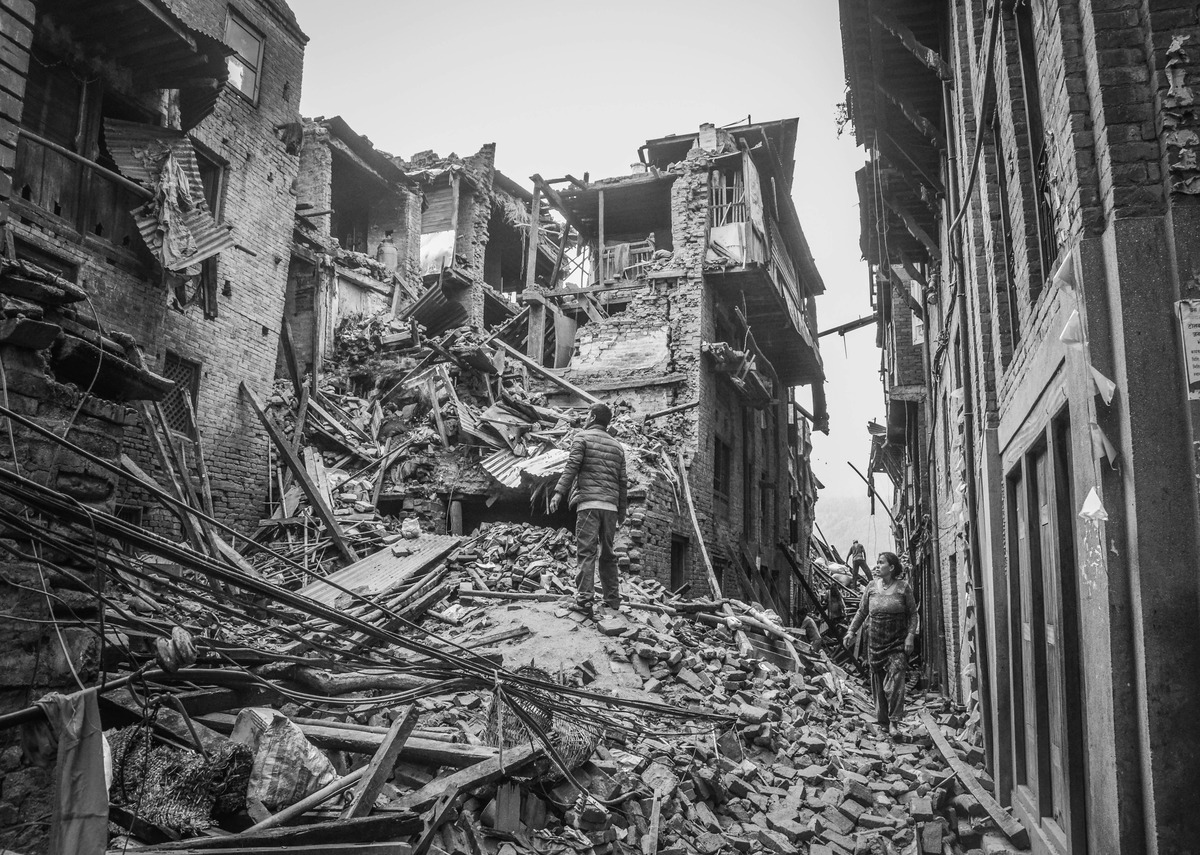The article ‘Understanding Earthquake Resistant Structures: Insights from a Geotechnical Engineer’ delves into the critical role of geotechnical engineering in safeguarding infrastructure against earthquakes. It explores the foundational principles of earthquake-resistant design, the challenges faced by engineers in unpredictable soil conditions, and the innovative techniques and methodologies being developed to enhance structural resilience. This comprehensive overview also examines real-world applications and case studies to illustrate the effectiveness of these approaches in mitigating the risks posed by seismic events.
Table of Contents
Key Takeaways
- Geotechnical engineering is pivotal in creating structures that can withstand earthquakes, emphasizing the importance of understanding soil-structure interaction.
- Base isolation and performance-based design approaches are at the forefront of earthquake engineering, offering methods to reduce the impact of seismic forces.
- Navigating uncertain soil conditions and adapting to urbanization are significant challenges that require advanced risk assessment and geotechnical methodologies.
- Innovations in seismic design, smart structures, and software solutions are enhancing the ability to predict and manage earthquake-induced damages.
- Case studies and real-world examples provide valuable insights into successful earthquake mitigation strategies and underscore the necessity of robust geotechnical practices.
Fundamentals of Earthquake-Resistant Design

Understanding Soil-Structure Interaction
The interplay between soil and structures during seismic events is a critical aspect of geotechnical engineering. Understanding soil-structure interaction is essential for designing structures that are resistant to earthquakes, floods, and other natural disasters. This involves analyzing how buildings, bridges, and other infrastructures respond to the forces exerted by the surrounding soil, particularly during an earthquake.
Soil-structure interaction (SSI) analysis is not only about assessing the direct impact on a structure but also about understanding the soil behavior under dynamic loading conditions. The nonlinear behavior of soil and the large deformations it can undergo present significant challenges for simulation. Techniques like the updated Lagrangian finite element method (UL-FEM) are often employed, despite their complexities.
The safety performance of critical civil infrastructures hinges on the accurate simulation of dynamic SSI. This is especially true for systems such as soil-embedded vehicle barriers, where the effectiveness during impact is paramount.
The following points highlight the importance of SSI in geotechnical engineering:
- It determines the structural integrity and resilience during seismic events.
- Accurate modeling of SSI is crucial for the design of safe construction processes.
- Innovations in simulation techniques are advancing our ability to predict and mitigate the effects of dynamic soil interactions.
Principles of Base Isolation Techniques
Base isolation is a revolutionary concept in earthquake engineering that aims to decouple a structure from ground motion, providing a powerful means of protecting buildings from seismic forces. By incorporating base isolation techniques, where the foundation is separated from the main structure, the transfer of seismic energy is significantly reduced. This principle is akin to placing a building on flexible bearings rather than directly on the ground, allowing it to move somewhat independently of the earth’s movements.
The effectiveness of base isolation is evident in its ability to preserve structural integrity and functionality during and after an earthquake. It is particularly beneficial for essential facilities such as hospitals, where uninterrupted operation is critical. However, the design and implementation of base isolation systems must be meticulously planned to address potential challenges, such as the backfilling issue that compromised a base-isolated hospital.
Base isolation systems are not a one-size-fits-all solution and require careful consideration of various factors, including building characteristics and site conditions. Field case histories and centrifuge test results are invaluable for validating the proposed simplified procedures for evaluating building performance at liquefiable sites.
The following table outlines the key components of a base isolation system and their respective functions:
| Component | Function |
|---|---|
| Isolation Bearings | Dissipate seismic energy |
| Damping Devices | Reduce building movement |
| Moat Cover | Accommodate lateral displacements |
In conclusion, while base isolation offers a robust framework for earthquake-resistant design, it necessitates a comprehensive risk assessment and a performance-based approach to ensure the safety and resilience of structures.
Performance-Based Design Approaches
In the realm of earthquake engineering, performance-based design (PBD) represents a paradigm shift towards creating structures that are not only safe but also cost-effective and functional after seismic events. The essence of PBD is to tailor the seismic resilience of a building to its intended use and the potential consequences of failure.
Geotechnical design codes are evolving to incorporate reliability-based concepts, which aim to align design efforts with societally acceptable failure probabilities. This approach contrasts with the traditional reliance on a static ‘factor of safety’, urging engineers to consider the dynamic nature of seismic forces and the varying degrees of risk associated with different structures.
The seminar highlighted the transition to PBD, emphasizing the need for engineers to adapt to probabilistic analysis methods that account for the uncertainty inherent in seismic events.
A proposed method for determining design forces involves a modified linear model that provides hazard-consistent estimates, facilitating the application of PBD in engineering practice. The following list outlines the key components of PBD:
- Assessment of seismic hazards
- Evaluation of structural performance levels
- Determination of acceptable risk thresholds
- Implementation of design modifications to meet performance objectives
Challenges in Geotechnical Engineering

Navigating Uncertain Soil Conditions
One of the foremost challenges in geotechnical engineering is the unpredictability of soil conditions. Variations in soil properties can significantly impact the stability and safety of structures. Geotechnical Engineers must adeptly navigate these uncertainties through comprehensive site investigations and ongoing monitoring to mitigate risks such as foundation settlement.
Soil properties are not the only concern; groundwater levels and weather fluctuations during investigation and construction also pose challenges. For instance, in regions like Texas, soils with high shrink-swell characteristics require careful stabilization, often with lime, to prevent sulfate-induced heave. Balancing these factors is crucial for accurate geotechnical recommendations.
Ensuring a solid foundation involves a delicate balance between upward and downward forces from soils. This process includes gathering data on loads, conducting geotechnical investigations, and testing soil strength, all while considering weather conditions to correlate soil behavior with structural performance.
The following list outlines key steps in navigating uncertain soil conditions:
- Conducting thorough geotechnical investigations
- Testing soil properties for strength and stability
- Managing groundwater levels to prevent structural compromise
- Adapting to weather fluctuations during investigation and construction
- Implementing stabilization techniques in soils prone to shrink-swell
Risk Assessment Methodologies
In the realm of geotechnical engineering, risk assessment methodologies have become increasingly important. Geotechnical engineering focuses on soil assessment, stabilization, and transportation tools for successful construction projects. The variability of soils and rocks necessitates a shift from deterministic to probabilistic analysis, where the probability of failure is considered alongside traditional safety factors.
Probabilistic risk assessment (PRA) offers a structured approach to quantify the likelihood and impact of potential failures. This method involves:
- Identifying potential failure modes
- Estimating the probability of each mode
- Assessing the consequences of failure
- Integrating the probabilities and consequences to estimate risk
Advances in soil properties and environmental considerations are key for project integrity and safety.
The integration of laboratory testing, field exploration, and numerical monitoring provides a comprehensive understanding of risks such as soil liquefaction. No single method is foolproof; rather, a combination of approaches yields the most accurate assessment. As we navigate the uncertainties inherent in geotechnical materials, these methodologies guide us towards more robust and resilient designs.
Adapting to Urbanization and Environmental Changes
In the face of rapid urbanization, geotechnical engineers confront the challenge of adapting infrastructure to meet the demands of growing populations and evolving land use. Urbanization can significantly alter load conditions, necessitating careful consideration to ensure the long-term stability of both existing and new structures. As cities expand, the integration of technology with historical elements becomes essential in managing subterranean utilities and creating resilient communities.
Groundwater management is a critical aspect of urban construction projects, as it can lead to soil erosion and instability if not properly addressed. Effective strategies to mitigate these risks are paramount for the overall stability of urban developments. Moreover, the discipline of geotechnical engineering continues to evolve, leveraging innovative methodologies and cutting-edge technologies to navigate these complex challenges.
Neglected infrastructure leads to urban chaos with water contamination, traffic disruptions, power outages, and emergency response delays. Geotechnical engineering tools are crucial for construction projects, especially in seismic zones like Seattle. Cities are innovating underground networks to balance urban development with sustainability, adapt to climate change, and address environmental impacts.
The following list highlights the key areas where geotechnical engineering plays a vital role in adapting to urbanization and environmental changes:
- Evaluating the performance of individual elements of the built environment
- Managing the impacts of land use changes on ground conditions
- Developing strategies to manage groundwater and mitigate soil instability
- Integrating technology to enhance the resilience of infrastructural systems
- Addressing new risk factors such as climate change and induced seismicity
Innovations in Earthquake Engineering

Advancements in Seismic Design
The field of seismic design has seen significant advancements, with a focus on enhancing the resilience of structures to withstand seismic events. Innovative techniques and materials are at the forefront of this evolution, aiming to minimize damage and ensure safety. One such advancement is the integration of smart structures, which are equipped with sensors that monitor and adapt to vibrations, providing real-time data to mitigate the impact of earthquakes.
Recent developments in seismic design also include the use of performance-based procedures for assessing and improving the structural integrity of buildings. These procedures are crucial for understanding the behavior of a structure during an earthquake and for modeling potential issues such as seepage regimes. The emphasis on performance-based design has led to the creation of sophisticated software solutions that enable engineers to simulate and analyze various seismic scenarios, ensuring that structures are not only compliant with current standards but also prepared for future challenges.
The synergy between advanced seismic design techniques and the latest computational tools has revolutionized the way engineers approach earthquake-resistant construction. This collaborative approach allows for a more comprehensive understanding of the seismic response of structures, paving the way for safer and more reliable civil infrastructure.
The table below summarizes key areas of focus in the field of seismic design:
| Area of Focus | Description |
|---|---|
| Performance-Based Design | Tailoring structural responses to specific seismic demands. |
| Smart Structures | Incorporating sensing technologies for real-time monitoring. |
| Software Solutions | Utilizing advanced programs for simulation and analysis. |
Smart Structures and Sensing Technologies
The integration of sensing technologies into the fabric of structures has revolutionized the field of Geotechnical Engineering. Smart foundations are at the forefront of this innovation, embedding sensors directly into the foundation systems to provide real-time data on structural performance. This allows for the early detection of issues, ensuring timely maintenance and extending the lifespan of infrastructure.
Remote sensing and monitoring have also become pivotal in modern construction. These technologies offer the ability to remotely track ground conditions and structural integrity, leading to more informed decision-making and improved project efficiency.
The use of smart structures and sensing technologies represents a significant step towards sustainable and resilient infrastructure, enabling proactive management and maintenance of built environments.
Advancements in software solutions, such as AutoCAD and ETABS, have further enhanced the precision in designing structures capable of withstanding seismic events. These tools consider various environmental loads, providing engineers with the capability to predict and mitigate potential structural issues.
The following list highlights some key structural concepts relevant to smart technologies:
- Nanostructure
- Prestressed structure
- Structural robustness
- Structural steel
- Structural testing
The Role of Software Solutions in Structural Analysis
The advent of specialist software since the 1990s has revolutionized the field of structural analysis. Software solutions such as AutoCAD, StaadPro, and ETABS have equipped engineers with tools to draw, analyze, and design structures with unprecedented precision. These programs account for various environmental loads, including seismic forces, ensuring that structures are not only efficient but also resilient to earthquakes.
A structural engineer’s role now extends beyond static load considerations to dynamic scenarios, where creativity is paramount in ensuring that structures withstand the loads they encounter. The complexity of modern structures often necessitates innovative approaches, facilitated by software that can simulate and analyze these dynamic conditions.
The integration of software in structural engineering has led to a more robust and informed approach to earthquake-resistant design.
The following list highlights key areas where software solutions have made a significant impact:
- Performance-based design
- Analysis of fasteners and connections
- Post-tensioned and smart structures
- Earthquake and tsunami modelling
- Seismic and blast resistant design
In the ever-evolving landscape of structural engineering, software solutions continue to play a critical role in enhancing the safety and sustainability of civil infrastructure.
Case Studies in Earthquake Resilience
Analysis of Recent Seismic Events
The study of recent seismic events has underscored the critical role of site classification in regions prone to earthquakes. Detailed analysis of aftershock patterns reveals increased seismic activity following major earthquakes, which can significantly affect the seismicity of an area. This is particularly evident in regions influenced by major fault zones, such as the EAFZ.
Seismic profiles and ground motion data from these events provide valuable insights into the resonance effects on structures, particularly those with 4-5 floors that suffered collapse or serious damage. Comparing empirical ground motion models (GMMs) with recorded data underscores the need for robust analytical procedures in seismic response analysis.
The convergence of historical data and modern analytical techniques offers a comprehensive understanding of seismic impacts, guiding improvements in earthquake-resistant design.
The following table summarizes key aspects of recent seismic events and their implications:
| Aspect | Description |
|---|---|
| Aftershock Activity | Increased background seismicity post-main shocks |
| Site Classification | Essential for areas with high seismic vulnerability |
| Structural Resonance | Buildings with 4-5 floors particularly affected |
| Analytical Procedures | Need for advancement in equivalent linear and nonlinear methods |
Lessons Learned from Structural Failures
The study of structural failures is a cornerstone in the evolution of geotechnical engineering. Careful analysis of these events has led to improved practices and a deeper understanding of the science behind structural integrity. Often, these investigations are a form of forensic engineering, where despite adherence to the standards of the profession, unexpected failures occur. Such was the case with the box girder collapses in Australia during the 1970s, which significantly advanced structural knowledge.
Failures, while undesirable, are rich with lessons that can be leveraged to prevent future incidents. The following points encapsulate key takeaways from past structural failures:
- Recognition of unknowns and uncertainties in geotechnical data
- Importance of clear communication among project stakeholders
- Need for continuous learning and adaptation in engineering practices
It is through the meticulous dissection of failures that the engineering community can distill valuable insights, ensuring that each misstep paves the way for safer, more resilient structures.
In the realm of geotechnical engineering, the Stava tailings dam failure of 1985 stands as a stark reminder of the consequences of oversight and the imperative for rigorous risk assessment. This event, among others, underscores the necessity for engineers to remain vigilant and proactive in their approach to design and construction.
Success Stories in Earthquake Mitigation
The journey to earthquake resilience is exemplified by the proactive measures taken by nations such as Japan. Over the years, Japan has systematically enhanced its infrastructure to withstand seismic events, becoming a global leader in disaster preparedness. The country’s commitment to seismic safety is reflected in its rigorous building codes, innovative engineering practices, and public education programs.
One of the key aspects of Japan’s success is the implementation of base isolation systems in buildings, which serve to decouple the structure from ground motion, significantly reducing the impact of earthquakes. Additionally, the widespread use of flexible building materials and the retrofitting of older structures have contributed to the country’s robust earthquake resilience.
The integration of advanced technologies and meticulous urban planning has played a crucial role in mitigating the effects of seismic activities.
While Japan’s approach is commendable, it is important to recognize that earthquake mitigation is an ongoing process. Continuous research, development, and adaptation are essential to address the evolving challenges posed by seismic threats.
Geotechnical Engineering in Civil Infrastructure

Tunneling Projects and Underground Structures
In the realm of geotechnical engineering, tunneling projects present a unique set of challenges that require meticulous planning and execution. These structures, embedded deep within the Earth, must be designed to withstand not only the static loads of the surrounding soil but also the dynamic forces exerted by seismic events. Ensuring tunnel stability during and after construction is paramount for the safety and longevity of these underground spaces.
The Boston Central Artery and Tunnel (CA/T) project exemplifies the complexity and innovation required in such endeavors. It involved the stabilization of over 500,000 m3 of marine clay and organics, showcasing the need for advanced engineering solutions in tunnel construction. Similarly, the versatility of undersea tunnels highlights the economic, sustainable, and safe construction practices that are essential in modern geotechnical projects.
Earthquake-resistant tunnels require specialized engineering solutions to tackle seismic challenges. Seismic isolation systems decouple tunnels from the ground, providing an additional layer of protection against the unpredictable nature of earthquakes.
The integration of computational tools and experimental research, as seen in the study of soil-pipe interactions and trenchless technologies, further underscores the importance of innovation in this field. These tools aid in understanding the complex geomechanics phenomena and contribute to the development of more resilient underground structures.
Geophysical Measurement Studies for Site Evaluation
Geophysical measurement techniques have revolutionized the way geotechnical engineers evaluate potential construction sites. Unlike traditional methods, which are invasive and time-consuming, geophysical measurements offer a fast and noninvasive alternative. These methods not only save time but also reduce costs, making them an economically viable option for site evaluation.
The dynamic nature of geophysical parameters, as opposed to the static data from conventional methods, provides a more reliable basis for seismic site characterization. Widely preferred techniques such as SRT, MASW, and MT are applied swiftly and economically, yielding essential data on the geometric structure, physical properties, and dynamic behaviors of the earth.
The integration of geophysical measurements into site evaluation processes ensures a comprehensive understanding of subsurface materials, which is critical for the design and construction of earthquake-resistant structures.
Here is a summary of the steps involved in geophysical site investigations:
- Site Investigation: Initial phase involving soil sampling, testing, and analysis to understand geological and geophysical characteristics.
- Soil Mechanics: Analysis of soil’s mechanical properties to predict its behavior under stress.
- Data Acquisition: Utilization of methods like SRT, MASW, and MT for gathering data on subsurface materials.
- Site Classification: Classification based on Vs30 value according to relevant codes, such as TEBC adapted from NEHRP.
- Strong Motion Analysis: Evaluation of information from the nearest strong ground motion station, including epicenter distance, PGA, and Vs30.
The Importance of Geology and Environmental Interaction
The interplay between geology and the environment is a cornerstone of geotechnical engineering. Understanding the geological context and environmental dynamics is crucial for designing structures that can withstand seismic events. Geotechnical engineers must interpret and predict how geological changes over time, such as soil displacement or erosion, will impact civil infrastructure.
Geotechnical outcomes are significantly improved when environmental interactions are considered in the design process. This includes addressing contamination in land development, ensuring safety and compliance, and contributing to ecological restoration. The role of geotechnical engineers extends to various environmental services:
- Landfill design and ground remediation
- Groundwater protection and soil remediation
- Shoreline and erosion control
- Sustainable material use and lifecycle analysis
- Risk assessment and environmental impact analysis
The synergy between geotechnical engineering and environmental stewardship paves the way for sustainable and resilient infrastructure. By integrating environmental considerations into the design, engineers can lead in sustainability and ensure that engineering solutions are harmonious with the natural world.
Conclusion
The insights shared by geotechnical engineers throughout this article underscore the critical role of earthquake-resistant design in safeguarding our built environment. From the initial site evaluation to the application of advanced methodologies, it is evident that a deep understanding of the geology and the dynamic soil-structure interactions is paramount. Challenges such as uncertain soil conditions and the need for risk assessment methodologies highlight the complexity of designing structures that can endure seismic events. As the field of geotechnical engineering continues to evolve, embracing innovative solutions and probabilistic approaches, the goal remains clear: to enhance the resilience of structures and protect human lives against the unpredictable forces of nature. The collective efforts of civil engineers, particularly in earthquake engineering, are vital in shaping a safer future where our infrastructure can withstand the test of time and tremors.
Frequently Asked Questions
What causes earthquakes and how do they affect structures?
Earthquakes are caused by the sudden movement of rock along faults. They can range from being imperceptible to causing significant damage. Earthquake forces can lead to the collapse of buildings, making it crucial for structures to be designed to withstand seismic events to a certain degree.
How does geotechnical engineering contribute to earthquake-resistant design?
Geotechnical engineering plays a pivotal role in understanding soil-structure interaction and designing foundations and structures that can absorb and dissipate seismic energy, minimizing damage during earthquakes.
What is base isolation, and how does it help in earthquake engineering?
Base isolation is a technique that decouples a structure from ground motion, allowing it to move independently of the earth’s movements. This reduces the seismic forces transmitted to the structure, enhancing its resilience to earthquakes.
Why is site evaluation crucial before construction in earthquake-prone areas?
Site evaluation is vital to determine the depth profiles and physical properties of the earth, which influence the behavior of structures during seismic events. Understanding these aspects helps in designing buildings that are better equipped to handle the deformations caused by earthquake waves.
What are the challenges faced by geotechnical engineers in seismic design?
Geotechnical engineers face challenges such as uncertain soil conditions, urbanization, environmental changes, and the need for accurate risk assessment methodologies to ensure the safety and stability of structures in seismic zones.
How have innovations in technology impacted geotechnical engineering for earthquakes?
Technological advancements have introduced smart structures, seismic design software, and sensing technologies that enable more precise analysis and real-time monitoring, leading to more effective earthquake-resistant designs.






Pingback: Pioneering the Future: Exploring Cutting-Edge High-Speed Rail Innovations